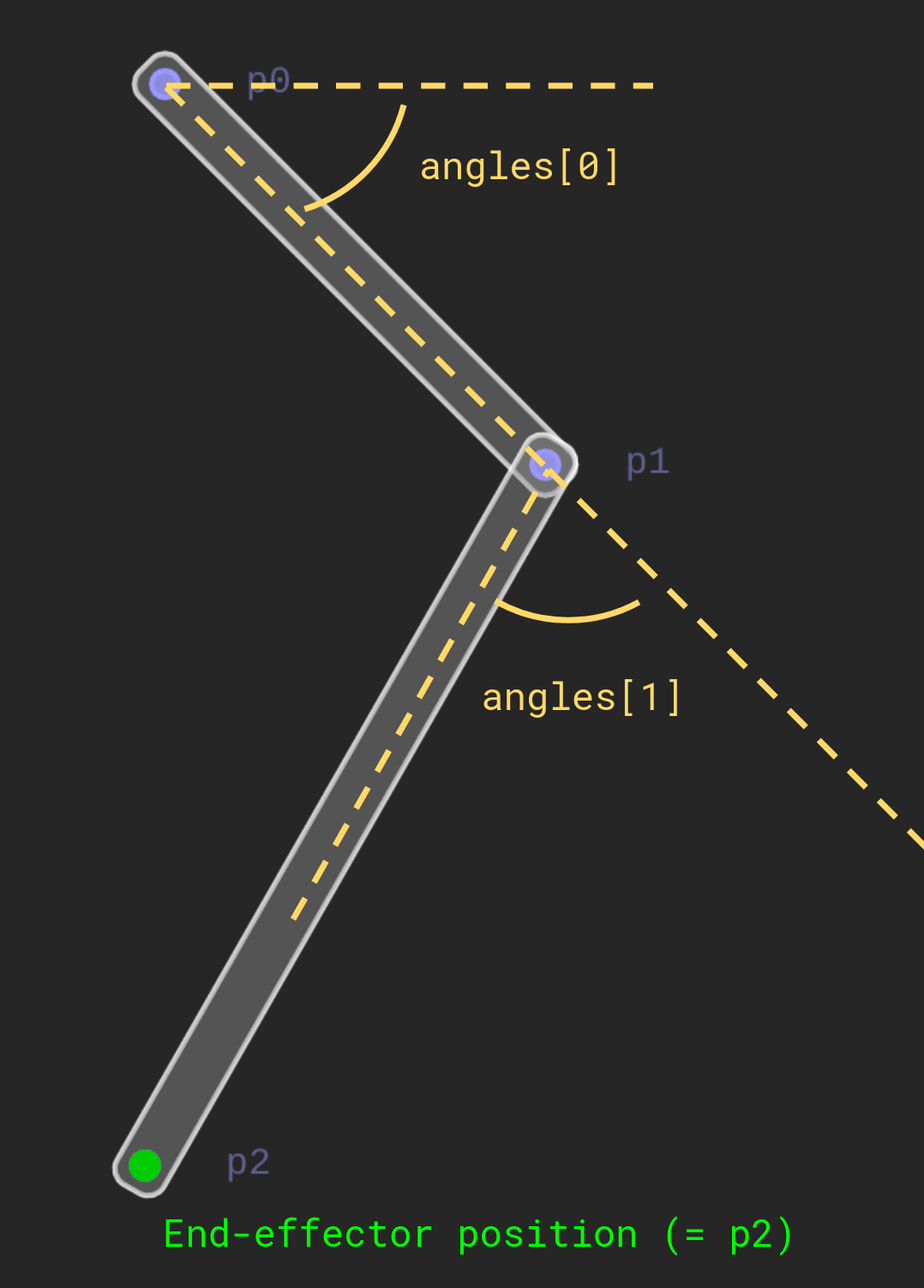For a more readable version of this document, see Readme.pdf.
In this assignment you will implement forward and inverse kinematics of a two-bar linkage.
Code: File src/kinematics/ForwardKinematics.h, function forwardKinematics(...).
Task: Implement forward kinematics for the linkage above by computing the coordinates of points p0, p1 and p2 given angles angles.
Details: The function forwardKinematics returns an array of size 3 containg the positions of the 3 points that define the state of the linkage, p0, p1 and p2. The angles of the linkage are defined in the figure above.
Test: Compile and run src/test-a1/test.cpp. Test 1 should pass.
Compile and run src/app/linkage-app.cpp. You can change the angles with the sliders or by left-clicking in the left half of the app.
We want to solve the inverse kinematics using an optimization-based approach. For this, we will need derivatives of thee forward kinematics, or in other words, how the end-effector coordinates change when we change the angles.
Code: File src/kinematics/ForwardKinematics.h, functions dendEffector_dangles(...) and ddendEffector_ddangles(...).
Task: Implement the 1st and 2nd derivative (Jacobian and derivative of Jacobian) of the end-effector position with respect to the angles.
Details: Implementing these functions will help us later setup inverse kinematics.
Test: Compile and run src/test-a1/test.cpp. Test 2 and 3 should pass.
Now we are ready to solve inverse kinematics. We want to construct an objective function that describes our goal: Reach a target position (target) with the end-effector (endEffectorPosition(...)).
Code: File src/kinematics/InverseKinematics.h.
Tasks:
-
Implement the objective function $$ f(x) = \frac{1}{2}(e(x)-x_t)^T(e(x)-x_t) $$ where
$x$ are the angles and$e(x)$ returns the position of the end-effector. Code:InverseKinematics::evaluate(x).xare the angles. Test: Compile and runsrc/test-a1/test.cpp. Test 4 should pass. -
Implement the analytic gradient $$ \frac{\partial f}{\partial x} = \nabla_xf. $$ Code:
InverseKinematics::gradient(x). Hint: Leverage the functions you implemented in part 2! Test: Compile and runsrc/test-a1/test.cpp. Test 5 should pass. -
Implement the analytic Hessian $$ \frac{\partial^2f}{\partial x^2} = \nabla_x^2f. $$ Code:
InverseKinematics::hessian(x). Hint: Leverage the functions you implemented in part 2! Test: Compile and runsrc/test-a1/test.cpp. Test 6 should pass.
Now that you have completed all of part 3, you can try out the app. Change the optimization strategy, and change the energy landscape by changing the target.
